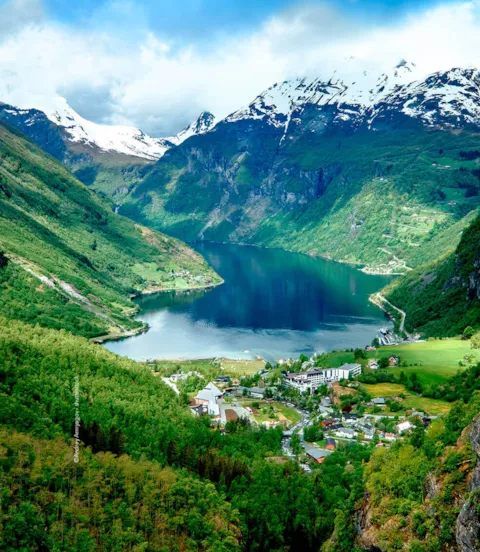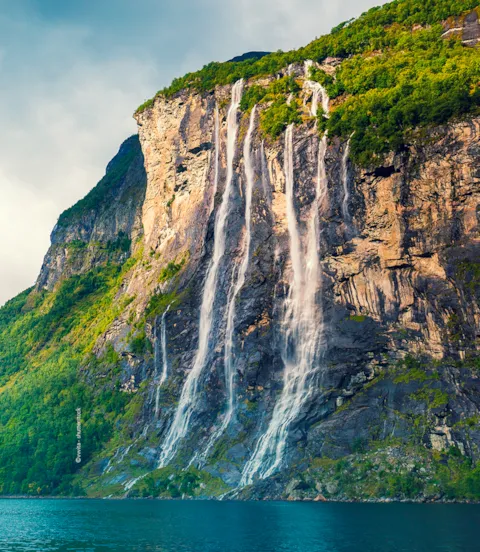Norway challenges the cruise industry to operate emission free
Environmental regulations are tightening up everywhere, but nowhere faster or firmer than in Norway’s World Heritage Fjords. The Norwegian parliament has decreed that the country’s UNESCO-protected fjords shall be free from cruise and ferry emissions no later than 2026.
The United Nations Educational, Scientific and Cultural Organization (UNESCO) designated the Geiranger and Nærøy fjords on Norway’s west coast as World Heritage Sites in 2005. The intention of the designation is to ensure the protection, conservation, presentation and transfer to future generations of the culture and natural heritage in the unique fjord environment. Tourism is already well developed in these sensitive fjords, and a 40 per cent increase in tourist traffic has been projected by 2030.
“Growth at this level will be unsustainable unless we find new ways to manage tourism in the heritage fjords,” says State Secretary Atle Hamar in the Ministry of Climate and Environment. “The tourism industry will have to take a role in the clean-up, and the government’s assignment is to implement rules and regulations that place responsibility where it belongs.”

Zero emissions in the Norwegian fjords
The new law is currently under extended review, with approval expected in early 2019. The measures cover emissions to air, discharge of grey and black water, and visible exhaust from the funnel. Grey water, sewage discharge and visible exhaust are generally acknowledged as manageable issues, while eliminating SOx and NOx are seen as posing larger challenges.
The most recent amendments to the regulations also ban the use of scrubbers for removing SOx and NOx from emissions. “For those not running on clean energy like batteries or hydrogen, this will mean a shift to low-sulphur fuel, use of catalytic converters, or other alternatives,” says Hamar.
In addition to protecting the environment and preserving the natural integrity of the heritage fjords, a key goal with the regulations is to reduce health risks for area residents. A central measure will be to install shore power for all ships to reduce emissions while in port, including supplying adequate power where grids do not have the necessary capacity.
One answer to this challenge is the power dock energy storage concept already in place in Gudvangen in Nærøyfjord, allowing charging over longer periods of time and supplying power as needed to the vessels. Hamar notes that this concept is highly exportable, making solutions devised in Norway potentially relevant for efforts to clean up local marine environments around the world.

Grass-root rules for greener fjords
“We are also encouraging the use of local regulations in ports to bring about change. Fees and charges can be adjusted to encourage greener practices in ports, finance sustainable solutions on shore, and reward cleaner ships. Owners must be convinced to build sustainable ships and phase out those most harmful to the environment,” Hamar emphasizes.
Establishing hubs further out in the fjords and shuttling passengers in to the protected areas is another option under consideration. Hamar notes that the emission-free battery technology that might one day power shuttle craft is already in place on the hybrid Vision of the Fjords and the all-electric Future of the Fjords, both operating in Nærøyfjord.
Additional measures could include spreading tourist traffic over a longer season, spanning from early spring to late autumn, and including the winter months.

Ambitious green maritime goals
Is it in fact realistic to expect emissions from cruise and ferry traffic to be eliminated in the Norwegian heritage fjords by 2026? “These are very ambitious goals from parliament,” Hamar acknowledges. “But we believe the goal is realistic using a combination of effective legislation and the most advanced hybrid and battery technology available today, and technologies that will emerge in the interim.”
He points out that many developments have transitioned from incentive and fee-based initiatives to market-driven sustainable solutions relatively quickly. “I have met with key industry stakeholders who tell me that demanding rules and regulations help drive development, and they welcome tough legislation.”
He also notes that Norway is already an established leader in green maritime initiatives. “Our Green Coastal Shipping programme is a good example of this, as is the NOx incentive fund for rewarding initiatives to reduce NOx emissions.”
Hamar acknowledges that no comprehensive solution has been determined yet, but underscores that the commitment is nonetheless binding. “Our challenge is to manage the growth we know is coming. The overall solution must be sustainable for the tourism industry, residents and the environment. The regulations are tough, but I am a cautious optimist. The means are available, the stakeholders are willing, and results so far back up our ambitions.”
Helge Hermundsgård
Head of Sales